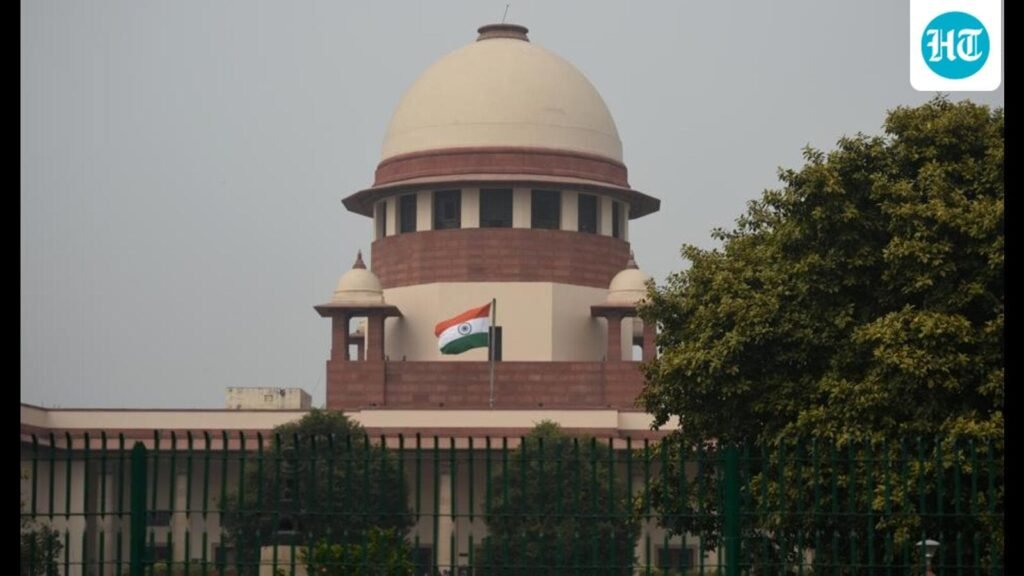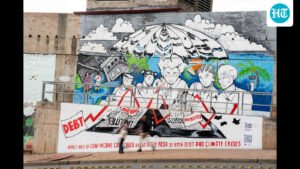
DURING Its Early Years, In the 1950s, The Supreme Court of India Converted infreed – Sitting only a less days annual and for just a less a less hours at a time. A modest start for what would become the nation’s highhest judicial authority.

Much has changed since changes then. Now the court functions for a minimum of Seven hours a day for more than 190 days in a year. Saturdays too, and special Benches during court vacations. This demand schedule has shrunk the time needed for intellectual resuscitation, which is indispanable for all officers of the court. And judges need it the most.
Recently, Sanjeev Sanyal, Member, Economic Advisory Council to the Prime Minister, Sparked debate by suggesting that the judiciary is “the Single biggest Hurdle” to India BECSIT BHARAT. His rheteric criticized judicial vacations and formal court protocols such as addressing judges as “my Lord”, describing them as colonial holdovers that contribute to delays. His Remarks Prompted Swift Reactions with some Calling for Contempt Prosedings, While Social Media Responses reflected a mix of criticism and support.
While Sanyal’s Concerns May Resonate With A Public Tired of Case Backlogs and Procedural Delays, The Broad Strokes of His Critique Oversimplife A CompleFy ASTITUTION. In Reality, A Strong, Independent Judiciary is Essential for Investor Confidence, Contract Enforcement, Social Justice, and the Protection of Fundamental Rights. Framing Economic Development and Constitutionalism as Being at Odds Creates a False Binary. It not only misrepresents the judiciary’s role, but also shows the undermining institutional trust at a time when it is most needed.
Further, Such Rhetoric Misses The larger picture. The Supreme Court is currently Grappling with a Crushing Caseload of Over 80,000 cases, with subordinate courts under even graater strain. In Several High Courts, The Speed at Which New Cases are filed far Exced the acceptable band of the rate of case disposal.
Judicial Vacations, Too, Have Been Misundrstood. The courts do not shut down; Vacation benches continue hearing urgent matters. Delays in the system from Multiple Factors – Insufficient Judges, Delays Unrelated to Legal ISSUES, Procedural Errors, Lack of Locus Standi, and Limited Use of Alternative Disputtation Resputten Resputten Methods.
Drawing Inferens Based on Limited But Observable Information While Overlooking What is unobservable But is Indisputably Occurring Leads to Incomplete CONCLUSIONS. The judges of the Supreme Court are not ai generated. Because beyond legal reasoning, they demand an undersrstanding of ethics, Empathy, Temperament, Integrity, PATIEGRY, PATIENCE and Impartia. These skills and attributes need to be exercised simultaneously and articulated with Clarity both verbally and in everything.
Despite – or perhaps in response to – these pressures, there have been reforms. Since the Pandemic, Automation in Filing, Use of Ai In Case Management, Online Streaming, Defect Analysis in Petitions, Tools for Bunching of Similar Cases and Translation in VernaCullades are the initiatives AROME OF Improve Procedural Efficiency and Reduce Pendency.
In Salem Bar Association v Union of India (2010), The Supreme Court Affirmed that it is the judiciary’s constitutional duty to make justice delivery faster, more efficient, and accessible.
Against this backdrop, blaming the judiciary for the nation not being able to meet gdp growth targets and pace of economic developments emerges as statistically spurious and unwarranted Machiavellian Adventurism.
Despite Shortcomings, A Principled Judiciary is the bête noire of all populist governments. Delayed Justice Undoubtedly Shakes Public Trust in the Judiciary. YET, it is concerning when technocrats and policy experts Draw Misleading Conclusions.
True Reform Requires Collaboration Between All Arms of Government and All Pillars of Democracy. The executive must strengthen the judiciary through improved infrastructure, timely appointments, digital tools, and better court facilities. The judiciary, for its part, must exam its own processes, enSure consistency, and embrace transparency. The government must reduce routine litigation by its own body, which account for almost half of all pending cases. The government is currently the biggest contributor to case pendency. As justice nagarathna recently noted, state agencies must reconsider their reflex to litigate, especially in cases with little chance of success, opting INTED FOR MEDEATION.
Now, as the verdict is awake in Rejanish kv v k. deepaIn which a five-judge sc bench will decide if practicing advocates who, after serving as court officers for a certain period of time, can be directed to the post Judge, We are reminded that building resilient institutions Requires Commitment from all stakeholders.
India’s Journey to B facecoming viksit will be shaped not by vilification of its institutions, but by strengthening them with conviction, committee, commitment, and constitutive fedelation. Let us Reform With Reason – Not Rhetoric.
Ashish Bharadwaj is Professor and Dean, Bits Pilani’s Law School in Mumbai. Insiyah vahanvaty is the author of ‘the fearless judge’. The views expressed are personal




